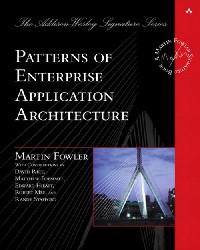24 March 2004
Typekey and MovableType
TypeKey is a new authentication service for the soon to be released MovableType 3.0. It will be open and free and allow other web applications to use this service as a central authentication service. It has already started some heated discussions in the bloging community. The reasons behind this system are based upon a desire to make it simple for weblog authors to allow open comments to be posted on the weblogs without this facility being abused by spammers. Whether it will be accepted, and whether it will actually work have still to be proven. Thanks to Bernie Goldbach (irish.typepad.com) for raising this issue with me.
19 March 2004
The Perils of Googling
A useful article The Perils of Googling (The Register) on the security risks of exposing material on a webserver that could be discovered and indexed by search engines like Google making it easily exploitable by people who know what to look for. "Ease of use" meets "gaping security hole"!
Groove 3.0

It looks like a new version of Groove is in beta testing. Ray Ozzie, ex-Lotus Notes architect, has been working with his team to create a really productive piece of hybrid p2p workgroup collaboration software. They've also put a Groove Blog on-line to help disseminate information.
The reviews so far look fairly positive:
- Groove's Ozzie Rides the Real-Time Wave - eWeek
- Life on the Edge - Interview with Ray Ozzie - C|Net
- Robin Good Interviews Ray Ozzie - Kolabora
5 March 2004
Meaning (and what it means)

Doing some background reading today I came across the excellent on-line work of J. F. Sowa (who edited the draft proposed ANSI standard for conceptual graphs):
Categorization in Cognitive Computer Science and Ontology, Metadata, and Semiotics.
He almost makes me want to believe in Artificial Intelligence again.
I was certainly very stimulated by his references to Charles Sanders Peirce (1839-1914). I had come across the concept of deduction, induction, and abduction, but did not know its provenance.
3 March 2004
Patterns for Enterprise Appliucation Artcitecture

The TSSG are currently designing a taught MSc in Communications Software (that will share modules with other taught MScs in Software Engineering offered in WIT) and we are exploring at ways of formalising the design knowledge required for such a course. Eamonn de Leastar (a colleague) alerted me to this excellent book: Patterns of Enterprise Application Architecture (Martin Fowler). Building a module around this could help make it generic enough to of value to a range of taught MSc offerings. A related book is Enterprise Integration Patterns (Hohpe & Woolf), the link it to a portal site where similar issues are discussed. I was impressed by the simple clarity of Hohpe's discussion around the areas of message-oriented middleware and loose coupling Asynchronous Messaging Architectures in Practice. This is related to the interesting work on the REST (REpresentational State Transfer) of Roy Fielding's PhD dissertation, a retrospective architectural justification for we-based architectures.
All this Design Patterns work is based on the famous Gang of Four Design Patterns (Gamma, Helm, Johnson and Vlissides, 1994) book. Another work colleague, Karl Sandison, is a big fan had has been using this as part of the undergraduate programme for many years. This distinction is that Fowler and Hohpe explictly focuses on Enterprsie Patterns.
Amazon references:
Patterns of Enterprise Applications Architecture (Fowler, 2002).
Enterprise Integration Patterns (Hohpe & Woolf, 2003).
2 March 2004
Joint AlbatrOSS & Opium Workshop

People often ask me what I do in the TSSG (Telecommunications Software & Systems Group), and sometimes I am a bit stuck for an answer. This is beause the constant involvement in trying to win funding for new projects in the general area of distributed computing and in communications software can be a bit abstract. Like many managers I spend a lot of time in meetings, this doesn't sound very exciting. However, I really beleive in what the TSSG are trying to achieve and it is usually quite hard to articulate this vision in a concrete way.
Recently however, two (of the 11 or so) projects our group is involved in at the moment held an open workshop and published on-line as much material as they could about this. The resulting page of links captures the type of activity we have done (in the two projects Opium and AlbatrOSS) and also where we're heading (in the overviews of the new projects: SEINIT, and Daidalos). Of course there are many links to other projects we're involved in, and these projects build on many previous strands of activity.
AlbatrOSS & Opium Workshop (Berlin 25th Feb 2004)
In summary these projects have looked at a wide range of issues facing services and service management in wireless networks, with particular focus on the telecommunications services in the 2.5G and 3G networking environments. Opium has promoted 2.5G and 3G interoperability testing between different operators and service providers. AlbatrOSS has tried to define an managament architecture for 3G services.
For further information see:
AlbatrOSS Overview
Opium Overview
TSSG Home Page